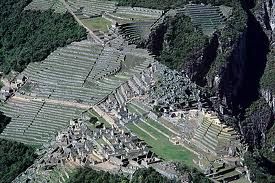212 Stories served. 30 per day.
This is actually the hardest diary to execute, and yet perhaps the most valuable because it lets you track story trends over time. It should be a Sunday morning feature.

Jul 25 2010
212 Stories served. 30 per day.
This is actually the hardest diary to execute, and yet perhaps the most valuable because it lets you track story trends over time. It should be a Sunday morning feature.
Jul 25 2010
This is your morning Open Thread. Pour a cup of your favorite morning beverage and review the past and comment on the future.
It was on this day in 1788 that Wolfgang Mozart completed his Symphony number 40 in g minor (K550). In the late 1780’s with his fortunes falling and in need of income moved from central Vienna to a suburb. While he had more space for his family his expenses still increased an he was borrowing money from friends. It was felt that he was suffering from deep depression but it was at this time that he wrote not only Symphony number 40 but also the last of the three Da Ponte operas, Così fan tutte.
Jul 25 2010

In 1984, photojournalist Steve McCurry was in an Afghan refugee camp in Pakistan. He followed the sound of voices to a tent where he found a group of girls. “I noticed this one little girl off to the side that had his incredible set of eyes that seemed almost haunted – or very piercing,” he tells NPR’s Audie Cornish.
McCurry snapped a picture that ended up on the cover of National Geographic’s June 1985 issue. “The Afghan Girl” became one of the magazine’s most widely recognized photographs – and one of the century’s most iconic. To get that shot, McCurry used a type of film that has become iconic in its own right: Kodachrome.
The film, known for its rich saturation and archival durability of its slides, was discontinued last year to the dismay of photographers worldwide. But Kodak gave the last roll ever produced to McCurry. He has just processed that coveted roll at Dwayne’s Photo Service in Parsons, Kan. – the last remaining location that processes the once-popular slide film.
The pictures that are on the last roll of Kodachrome will become the subject of a “National Geographic” documentary.
I have fond memories of my 35mm Yashika and Canon cameras.
Jul 25 2010
Evening Edition is an Open Thread
| From Yahoo News Top Stories |
1 Gulf oil spill operations resuming after storm weakens
by Alex Ogle, AFP
46 mins ago
| NEW ORLEANS, Louisiana (AFP) – A drill rig headed back to the site of the Gulf of Mexico oil spill Saturday after an oncoming storm weakened, as officials raced to restart work to permanently “kill’ the leaking well.
The US official overseeing the spill response said a first chance to seal the well for good could come in the next three to five days, as response crews quickly scaled operations back up. Development Driller 3 (DD3), charged with drilling a relief well that will aid efforts to plug the leak, was expected back at the site shortly and would begin reattaching to the well site immediately, Admiral Thad Allen said. |
Jul 24 2010
This is your morning Open Thread. Pour a cup of your favorite morning beverage and review the past and comment on the future.

On July 24, 1911, American archeologist Hiram Bingham gets his first look at Machu Picchu, an ancient Inca settlement in Peru that is now one of the world’s top tourist destinations.
Tucked away in the rocky countryside northwest of Cuzco, Machu Picchu is believed to have been a summer retreat for Inca leaders, whose civilization was virtually wiped out by Spanish invaders in the 16th century. For hundreds of years afterwards, its existence was a secret known only to the peasants living in the region. That all changed in the summer of 1911, when Bingham arrived with a small team of explorers to search for the famous “lost” cities of the Incas.
Machu Picchu (Quechua: Machu Pikchu) – “Old Mountain”, is a pre-Columbian Inca site located 2,430 metres (7,970 ft) above sea level. It is situated on a mountain ridge above the Urubamba Valley in Peru, which is 80 kilometres (50 mi) northwest of Cuzco and through which the Urubamba River flows. Most archaeologists believe that Machu Picchu was built as an estate for the Inca emperor Pachacuti (1438-1472). Often referred to as “The Lost City of the Incas”, it is perhaps the most familiar icon of the Inca World.
The Incas started building the estate around AD 1400 but it was abandoned as an official site for the Inca rulers a century later at the time of the Spanish conquest of the Inca Empire. Although known locally, it was unknown to the outside world before being brought to international attention in 1911 by the American historian Hiram Bingham. Since then, Machu Picchu has become an important tourist attraction and, since it was not found and plundered by the Spanish after they conquered the Incas, it is important as a cultural site.
Machu Picchu was declared a Peruvian Historical Sanctuary in 1981 and a UNESCO World Heritage Site in 1983. In 2007, Machu Picchu was voted one the New Seven Wonders of the World in a worldwide Internet poll.
Machu Picchu was built in the classical Inca style, with polished dry-stone walls. Its primary buildings are the Intihuatana, the Temple of the Sun, and the Room of the Three Windows. These are located in what is known by archaeologists as the Sacred District of Machu Picchu. In September 2007, Peru and Yale University reached an agreement regarding the return of artifacts which Hiram Bingham had removed from Machu Picchu in the early twentieth century.
Jul 24 2010
VA doctors still can’t prescribe marijuana but the patients in the 14 states where it is legal, no longer have to fear losing their VA benefits if the are found using marijuana. Certainly a step in the right direction for many patients.
DENVER – The Department of Veterans Affairs will formally allow patients treated at its hospitals and clinics to use medical marijuana in states where it is legal, a policy clarification that veterans have sought for several years.
A department directive, expected to take effect next week, resolves the conflict in veterans facilities between federal law, which outlaws marijuana, and the 14 states that allow medicinal use of the drug, effectively deferring to the states.
snip
Veterans, some of whom have been at the forefront of the medical marijuana movement, praised the new policy. They say cannabis helps sooth physical and psychological pain and can alleviate the side effects of some treatments.
“By creating a directive on medical marijuana, the V.A. ensures that throughout its vast hospital network, it will be well understood that legal medical marijuana use will not be the basis for the denial of services,” Mr. Krawitz said.
Many clinicians already prescribe pain medication to veterans who use medical marijuana for pain management, as there was no rule explicitly prohibiting them from doing so, despite the federal marijuana laws.
snip
Steve Fox, director of government relations for the Marijuana Policy Project, which favors the legal regulation of the drug, called the decision historic. “We now have a branch of the federal government accepting marijuana as a legal medicine,” he said.
But Mr. Fox said he wished the policy had been extended to veterans who lived in states where medical marijuana was not legal.
Mr. Fox said it was critical that the veterans department make clear its guidelines on medical marijuana to patients and medical staff members, something officials said they planned on doing in coming weeks.
Jul 23 2010
Evening Edition is an Open Thread
| From Yahoo News Top Stories |
1 Evacuation underway as storm heads to Gulf spill site
by Alex Ogle, AFP
52 mins ago
| NEW ORLEANS, Louisiana (AFP) – A tropical storm barreling towards the Gulf of Mexico oil spill site Friday forced crews to suspend operations and halt work to permanently plug the gushing BP well.
Admiral Thad Allen, the US official overseeing the spill response, said that crews aboard two drilling rigs and a container ship were drawing up thousands of feet of pipes from beneath the sea, while non-essential personnel were being evacuated as Tropical Storm Bonnie took aim at the area. Officials said a cap that has kept oil from escaping the well since last Thursday would stay in place, after a week of tests suggested pressure would not force oil out through new leaks. |
Jul 23 2010
This is your morning Open Thread. Pour a cup of your favorite morning beverage and review the past and comment on the future.

THE GREAT COMET OF 1997. Above, the bright head of comet Hale-Bopp, called the coma, is pointed towards the Sun. The coma is composed of dust and gas, masking the solid nucleus of the comet made up of rock, dust and ice. Photo taken by Jim Young at NASA’s Jet Propulsion Laboratories Table Mountain Observatory in March 1997.
The comet was discovered in 1995 by two independent observers, Alan Hale and Thomas Bopp, both in the United States. Hale had spent many hundreds of hours searching for comets without success, and was tracking known comets from his driveway in New Mexico when he chanced upon Hale-Bopp just after midnight. The comet had an apparent magnitude of 10.5 and lay near the globular cluster M70 in the constellation of Sagittarius. Hale first established that there was no other deep-sky object near M70, and then consulted a directory of known comets, finding that none were known to be in this area of the sky. Once he had established that the object was moving relative to the background stars, he emailed the Central Bureau for Astronomical Telegrams, the clearing house for astronomical discoveries.
Bopp did not own a telescope. He was out with friends near Stanfield, Arizona observing star clusters and galaxies when he chanced across the comet while at the eyepiece of his friend’s telescope. He realized he might have spotted something new when, like Hale, he checked his star maps to determine if any other deep-sky objects were known to be near M70, and found that there were none. He alerted the Central Bureau of Astronomical Telegrams through a Western Union telegram. Brian Marsden, who has run the bureau since 1968, laughed, “Nobody sends telegrams anymore. I mean, by the time that telegram got here, Alan Hale had already e-mailed us three times with updated coordinates.”
The following morning, it was confirmed that this was a new comet, and it was named Comet Hale-Bopp, with the designation C/1995 O1. The discovery was announced in International Astronomical Union circular 6187.
Jul 23 2010
Evening Edition is an Open Thread
| From Yahoo News Top Stories |
1 Storm forces Gulf oil spill ships back to port
by Alex Ogle, AFP
1 hr 31 mins ago
| NEW ORLEANS, Louisiana (AFP) – The US government ordered certain ships working on the Gulf of Mexico oil spill back to port Thursday, amid fears that a brewing storm could force a mass evacuation and derail efforts to plug BP’s runaway well.
A full-scale evacuation could delay by up to two weeks the final operation to plug BP’s runaway well, which has unleashed millions of barrels of crude on Gulf Coast shorelines in one of America’s worst ever environmental disasters. “Activities that are under way for storm preparedness include evacuating specialized vessels from the path of any severe weather to prevent damage and ensure that oil recovery operations can resume as soon as possible after a storm,” a Coast Guard statement said. |
Recent Comments